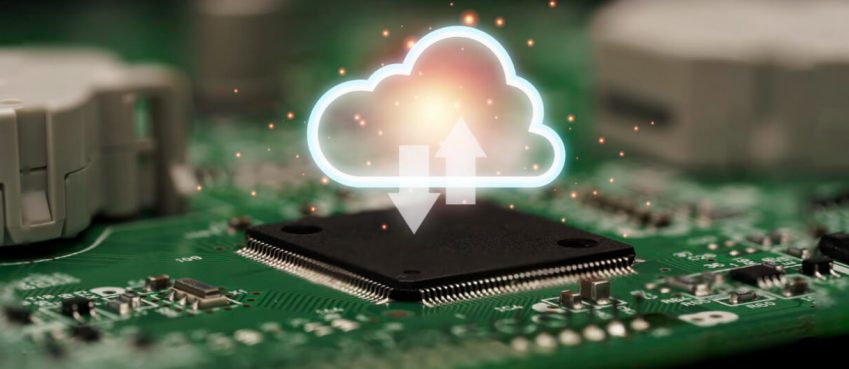
Embedded software is ubiquitous in modern technology, powering devices from everyday smart gadgets to sophisticated medical equipment and automotive systems. There are over 50 billion embedded devices globally, with projections indicating exponential growth. However, delving into embedded program development poses challenges, requiring specialized skills, tools, and processes different from those used in general-purpose software. These complexities often lead startups to the question: is it better to tackle this independently or engage a professional embedded software development services company?
Which Hardware Components Need Embedded Software Services
To understand embedded hardware, we need to zoom out a bit. Embedded hardware refers to the physical devices that run embedded software. These devices can vary from simple microcontrollers that perform specific tasks, to complex system-on-chips (SoCs) that integrate multiple functions and features. Startups that want to develop embedded hardware programs often choose among different types of embedded hardware:
- Sensors — are devices that measure physical quantities such as temperature, pressure, light, sound, motion, etc. These can provide input data for embedded systems to process and act upon.
- Actuators — these devices convert electrical signals into mechanical movements or actions. They provide output for embedded software to control and manipulate physical systems.
- Communication modules enable data transmission and reception between embedded hardware and other devices or networks. These support various protocols and standards such as Wi-Fi, Bluetooth, Zigbee, LoRa, cellular, etc.
- Memory modules — are devices that store data and instructions for embedded software. Such modules can have different types and capacities, such as flash, EEPROM, SRAM, DRAM, etc.
- Power modules — these supply or manage the electrical power for embedded hardware. They include batteries, chargers, converters, regulators, etc.
These are just a few examples of embedded hardware that startups may need company services for software development for embedded equipment, such as Sirin Software, which has proven itself reliable. Depending on the specific application and requirements, startups may need to use different combinations and configurations of embedded hardware. Factors such as performance, power consumption, memory capacity, connectivity, security, and cost also need to be taken into account. In addition, it is imperative for fledgling businesses to secure seamless and interoperability amid the hardware and software constituents constituting their system. To illustrate, certain embedded gadgets necessitating the services of development firms encompass:
- Smart domicile apparatus, encompassing thermostats, cameras, speakers, and locks.
- Wearable technologies are exemplified by smartwatches, fitness trackers, and health monitoring devices.
- Industrial machinery, embracing sensors, actuators, robotics, and control systems.
- Automotive contrivances, such as infotainment systems, navigation modules, and driver assistance mechanisms.
Embedded Software Development Challenges
Thriving in the realm of embedded software development mandates that startup visionaries acquaint themselves with the prevalent predicaments encountered by developers and devise strategies to surmount them. This acumen enables informed decision-making and effective planning. Some of the challenges developers confront include:
- Resource Limitations: The constraints of resources like memory, processing capabilities, and energy necessitate efficient optimization without compromising functionality.
- Real-time imperatives: meeting strict time and efficiency requirements — talking about online processes with millisecond accuracy — is critical for embedded systems such as smart cars.
- Safety and reliability. Guaranteeing data security, encryption, and system reliability in the face of potential threats is important for meeting privacy requirements, for example in medicine.
- Compatibility and adaptability. Ensuring seamless integration across multiple hardware platforms, devices, and evolving standards is a constant challenge for complex smart city infrastructures, for example.
The Process of Developing Embedded Software
This is a complex process of creating software for integrated hardware, requiring a high level of competence. The challenge of development lies in meeting strict criteria for functionality, performance, reliability and security, and, finally, compatibility. To solve this set of problems, developers follow a step-by-step process:
- First, the project is analyzed for its scope, goals and limitations, for example, telecommunications legislation. Developers figure out who will use the hardware they’re writing code for —the target audience — and what it takes to ensure that the solutions they develop meet the project’s requirements and satisfy users’ needs.
- Then comes the design stage, at which the project is divided into stages, roles are assigned and the necessary tools for the work are selected — programming language and hardware.
- Once the plan is in place, it’s time to implement the project at the code level. When writing code, it is checked for functionality and compatibility with other equipment in the project ecosystem. For example, for a smart home air conditioning system, temperature sensors must be in sync with the ventilation, heating system and lifestyle scenario of the residents of the house.
- Testing is of utmost importance: it is when developers check whether the software performs the tasks for which the software is intended. If bugs are found, they are eliminated and checked again — this is iteration. Which lasts until the code meets the specified tasks.
- After testing, the process of debugging begins — improving the code. This means that the code should not only work, but that problems that arise are eliminated, and new tasks are added if necessary. This should lead to greater equipment performance and ease of use.
- And finally, deployment — it is about installing software on hardware and testing this configuration to work on the tasks of the integrated hardware.
But the developer’s joy doesn’t end there — maintenance continues. For example, the already familiar Sirin Software company provides product support, updates the system as needed and ensures uninterrupted operation throughout its entire lifecycle. Qt professionally explains in detail how to build an effective embedded systems design and software development process, from idea and goal to prototyping and testing.
Outsourcing Embedded Software Development
To decide whether to develop embedded software internally or hire a specialized company, you need to consider several aspects:
Benefits of Outsourcing:
- Expertise and Experience: Professional companies bring specialized skills and experience to the table.
- Cost and Time Efficiency: Outsourcing saves time and resources, allowing startups to focus on core competencies.
- Quality Assurance: Reputable companies follow best practices, ensuring high-quality results.
Criteria for Choosing a Partner:
- Portfolio: Assess a company’s capability through past projects.
- Experience and Reputation: Consider their industry experience and reputation for reliability.
- Communication and Cost: Clear communication and a balance between cost and service quality is the key.
Conclusion
Developing embedded software opens doors to endless opportunities, making regular devices better and running complex medical and car systems. Startups face a tough choice: do it alone or hire pros for this special job. Knowing all about embedded hardware — ranging from sensors to communication modules — is super important. Developing software for these things is tricky because of limits on resources and needing things to happen instantly. You’ve got to be really good at this. Whether you do it in your own team or team up with a company that provides services for embedded software development, you need to care a lot about making things work well together and being creative. Thus, the choice between independence and collaboration is the key to success for your groundbreaking innovation.
Top 10 News
-
01
Top 10 Deep Learning Multimodal Models & Their Uses
Tuesday August 12, 2025
-
02
10 Google AI Mode Facts That Every SEOs Should Know (And Wha...
Friday July 4, 2025
-
03
Top 10 visionOS 26 Features & Announcement (With Video)
Thursday June 12, 2025
-
04
Top 10 Veo 3 AI Video Generators in 2025 (Compared & Te...
Tuesday June 10, 2025
-
05
Top 10 AI GPUs That Can Increase Work Productivity By 30% (W...
Wednesday May 28, 2025
-
06
[10 BEST] AI Influencer Generator Apps Trending Right Now
Monday March 17, 2025
-
07
The 10 Best Companies Providing Electric Fencing For Busines...
Tuesday March 11, 2025
-
08
Top 10 Social Security Fairness Act Benefits In 2025
Wednesday March 5, 2025
-
09
Top 10 AI Infrastructure Companies In The World
Tuesday February 11, 2025
-
10
What Are Top 10 Blood Thinners To Minimize Heart Disease?
Wednesday January 22, 2025







